Table of Contents
- Terminology: Volts, Amps, Watts, mAh
- Calculating Dynamo Charging Rates
- Battery Storage Losses
- Charging Differences Between Dynamo Hubs and USB Chargers
- USB Charger Testing With Varying Speeds
- Battery Charging With Varying Speeds
- The Complexity of Calculating Smartphone Charging Rates
- Smartphone Charging With Varying Speeds
- Summary
Today I want to indulge in some data to find out how quickly we can charge different batteries and devices using a bicycle dynamo USB charger.
I will be explaining how different USB chargers and dynamo hubs will affect the charge rate. We will look at the charge rates both at constant speeds (easy to predict), as well as at varying speeds (hard to predict).
I will also be describing the complexity of predicting charge times on a smartphone (super hard to predict) using some newly available data.
This article is very graph and data-heavy, so hats off if you can digest it all the first time around. Please remember, you can always skip through to the summary at the end if you just want to extract the key points.
Terminology: Volts, Amps, Watts, mAh
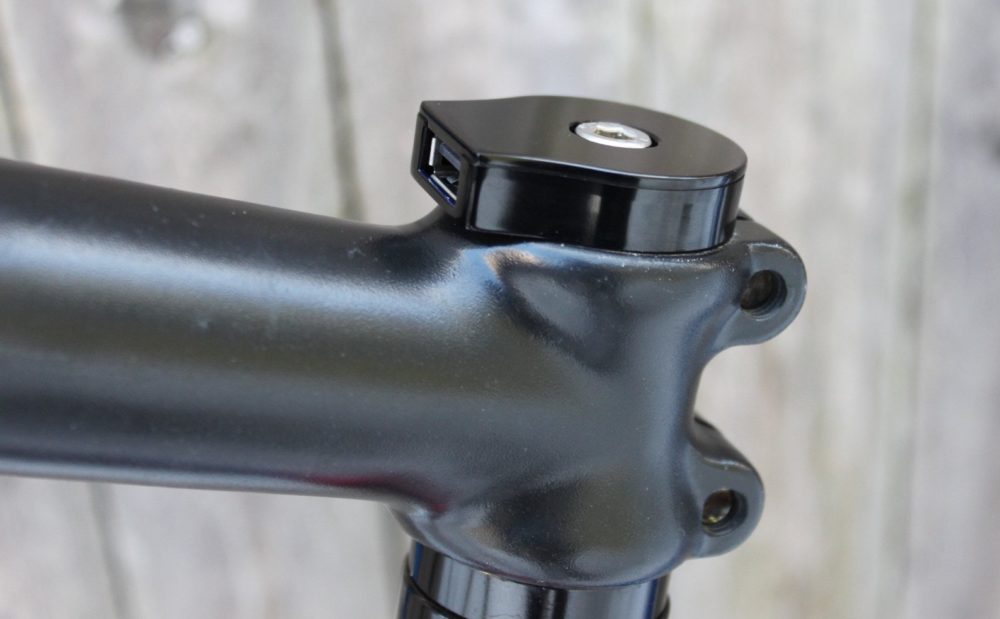
To understand this article well, let me briefly explain a few terms.
The voltage (in volts or ‘V’) and current (in amps, or ‘A’) make up the total electrical system power.
I won’t go into too much detail about what these are, but here’s what you should know: the output voltage (V) of a dynamo is fixed (mostly). Almost all dynamo hubs are designed to put out 6-volts in AC power, and once we convert this to the DC power necessary for charging things – we end up with around 5-volts.
It’s the current (A) that fluctuates most in a dynamo charging system. At low speeds, the current will be less than 0.1-amps, and at high speeds, it can be more than 2-amps.
If you didn’t understand that, don’t worry. The most important term to remember is watts, which is the total output power. I will be using watts to benchmark different chargers and hubs throughout this resource.
We get watts simply by multiplying the volts and the amps together. For example, a dynamo hub putting out 5-volts at 1.1-amps will provide 5.5-watts at the USB plug (5V x 1.1A = 5.5W).
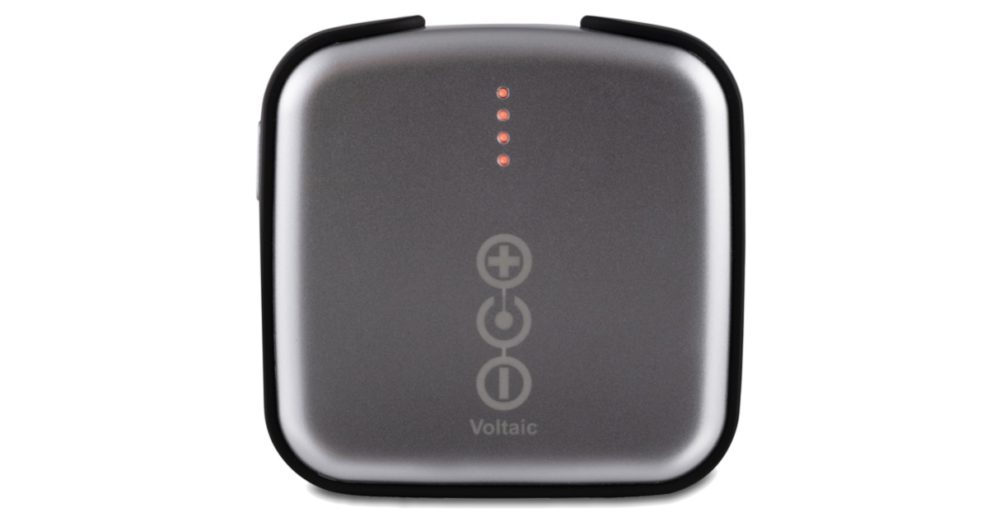
And lastly, I’m using milliamp hours, or mAh, when I’m referring to both battery energy capacity and charging rates. You will always find the total energy capacity (in mAh) written on the battery.
Calculating Dynamo Charging Rates
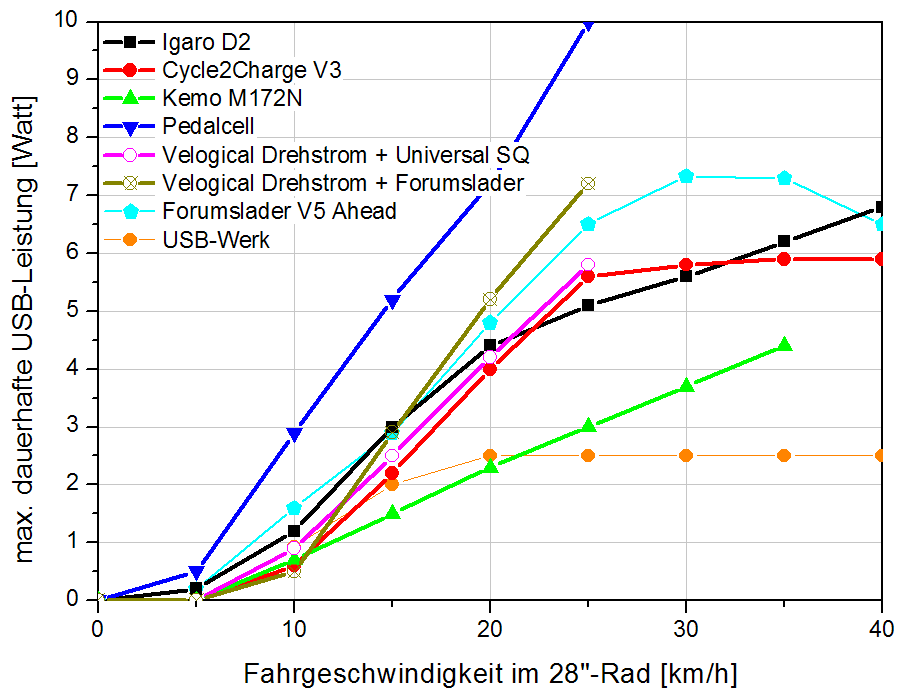
The simplest way to calculate how quickly a dynamo hub can charge devices is to look at a power curve graph. By picking a speed that you often find yourself cycling, you can determine the amount of power available at the USB plug, and the associated charging rate.
Example: 15kph with the Forumslader V5 Ahead Charger
When we follow the light blue Forumslader V5 graph line up to 15kph, we can see it’s producing 3-watts of power. As the voltage is fixed at 5-volts on a dynamo, we can calculate the current to 0.6A, which for an hour of riding is 600mAh. This would mean that when charging my Petzl CORE 1250mAh headlamp battery, it would fill from empty in 2 hours and 5 minutes.
Example: 15kph with the PedalCell Rim Dynamo Charger
The PedalCell (dark blue) is producing over 5-watts (5V and 1.04A) at 15kph, which for an hour of cycling translates to 1040mAh. It would fill my Petzl CORE 1250mAh headlamp battery from empty in 1 hour and 12 minutes.
Note: the data here has been recorded in 5kph intervals. To get a more accurate power output prediction, you should round up or down to the nearest 5kph of what you ride. This is because, in reality, USB chargers offer power in ‘steps’ – you’ll soon visualise this in the section Battery Charging With Varying Speeds.
Battery Storage Losses
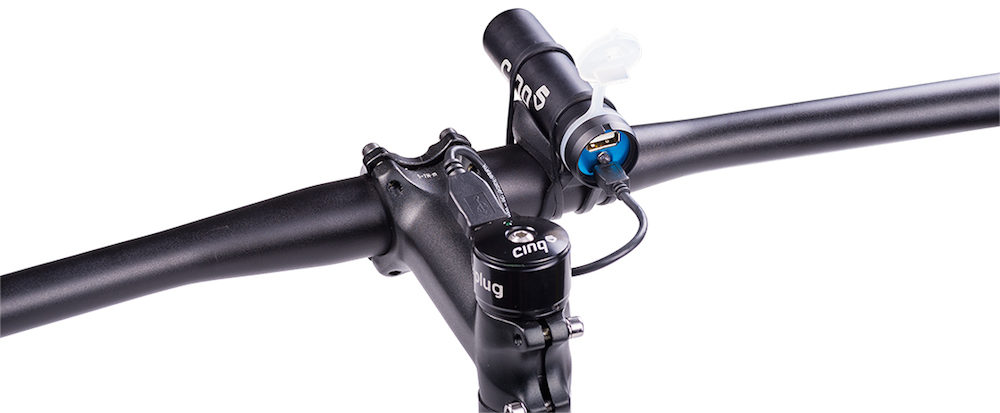
The calculations we’ve just made have assumed that all power is going directly to your device. But what if you’re charging into a battery so that you can save the power for later?
When power is stored in a battery, it experiences a storage loss of around 15-20%. This essentially means that you will need to cycle for 15-20% more time to get the same amount of energy to your device.
Using the same examples as previously: if I stored the energy in a battery first, my Petzl battery would require 2 hours and 30 minutes of cycling to fill (Forumslader V5 charger @ 15kph). And I’d need to ride for 1 hour and 26 minutes to fill my Petzl battery, using a PedalCell rim dynamo charger.
Charging Differences Between Dynamo Hubs and USB Chargers
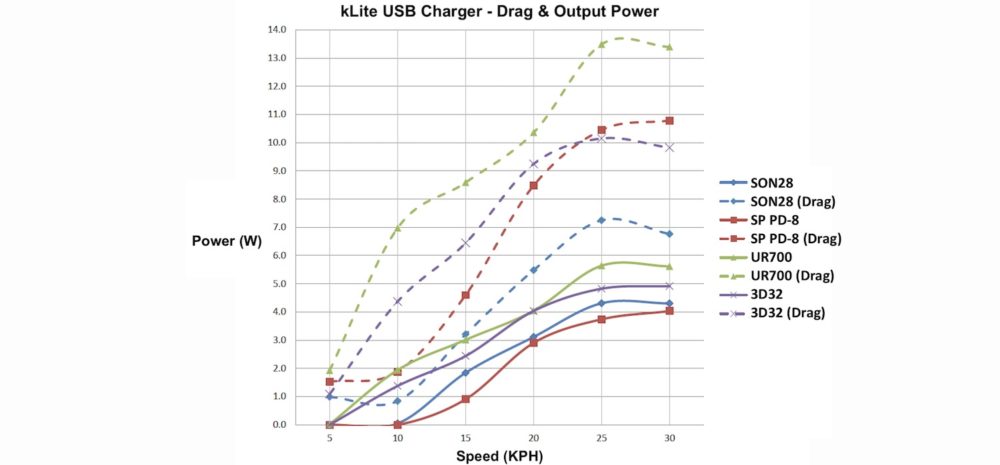
The power curve we previously looked at showed the differences in power available between different USB chargers. But how do dynamo hubs differ in power output?
It turns out, quite a bit…
Example: 15KPH with the Shimano UR700 hub
When we pair the UR700 with the kLite USB charger, the power available is 3-watts (5V and 0.6A), which translates to 600mAh. It would take 2 hours and 5 minutes to charge my Petzl headlamp battery with this combination.
Example: 15KPH with the Schmidt SON28 hub
If we instead use a Schmidt hub with the kLite USB charger, we’d get 1.9-watts (5V and 0.38A), which translates to 380mAh. This means that the charge time on my 1250mAh Petzl battery would be over three hours… or a 36% time difference between hubs.

When we look at the Shimano UR700 data across four different USB chargers, we can see 20-50% more power available at any given speed. While the data is limited to only four chargers, it’s quite likely that this hub will bring a significant boost in power to any dynamo charging setup.
But there is a downside to the UR700 hub – it’s more inefficient than other hubs. The amount of drag it experiences at the wheel is often 2-3x higher than the Schmidt hub, which can really add up to slow you down.
You can read more about dynamo hub drag HERE.
USB Charger Testing With Varying Speeds

While the graphs in the previous sections have given us an idea of the power output at very specific speeds, on undulating terrain, it’s unusual to cycle at a constant speed for long periods of time.
To help simulate undulating riding conditions, Fahrrad Zukunft created a dynamic test with varied cycling speeds to see which dynamo USB chargers could generate the most power.
The test is a little over the top in speed variation, but it’s still pretty interesting to see that some USB chargers are able to adapt to changes in speed better than others.
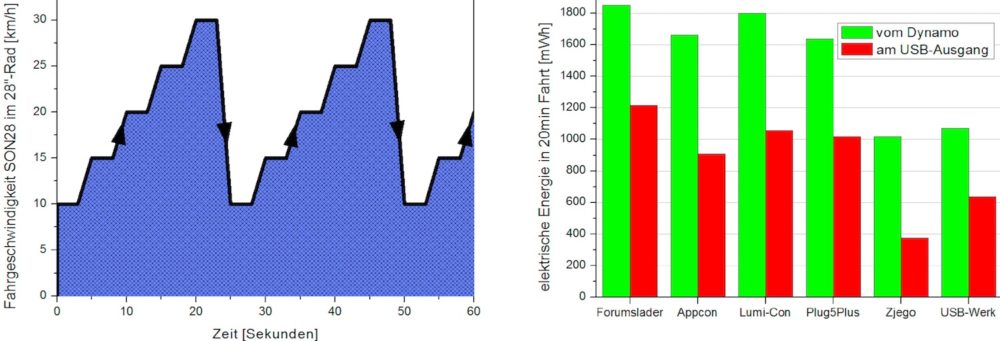
The test protocol had the cycling speed in 2-second steps from 10kph up to 30kph and then back down to 10kph again. The accelerations between steps took 3-seconds. This 20-minute test essentially exposes the responsiveness of the USB chargers, which are constantly trying to optimise the charging rate.
Output power at the USB port after 20 minutes:
1. Forumslader V5 (1200mWh or 240mAh)
2. Lumi Con P5 (1000mWh or 200mAh)
3. Plug5 Plus (1000mWh or 200mAh)
4. NC-17 Appcon 3000 (900mWh or 180mAh)
5. USB Werk (600mWh or 120mAh)
6. Zjego (400mWh or 80mAh)
Expectedly, the USB chargers with the highest power outputs did the best in this test, although the Lumi Con P5 is a standout because it offers less output power than the other chargers in the top-four, yet still manages to extract a decent charge thanks to how well it handles changes in speed.
Battery Charging With Varying Speeds
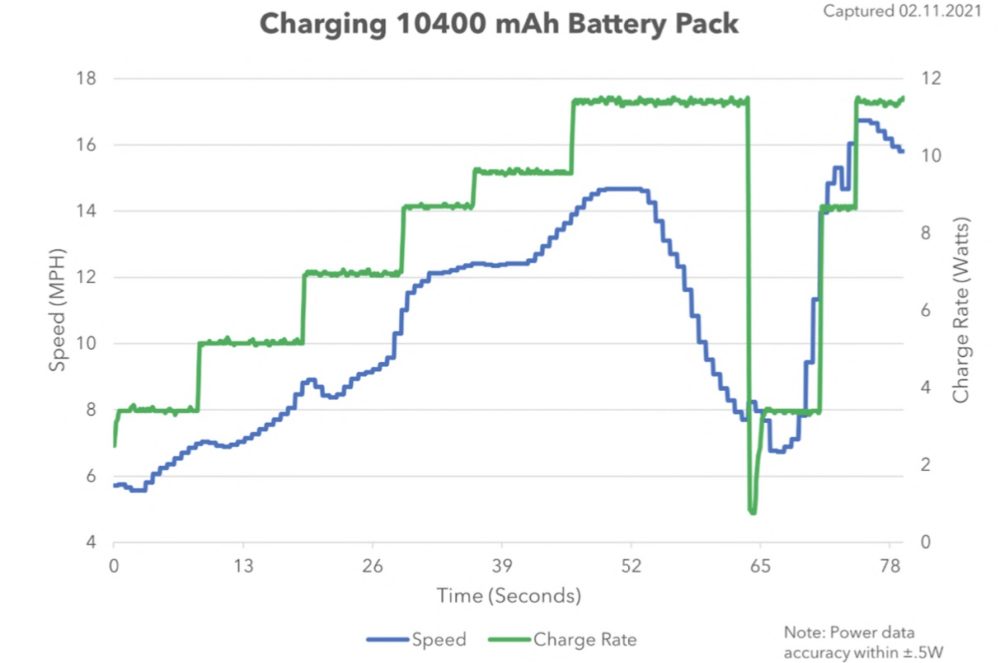
PedalCell has recently conducted a lab test (with CyclingAbout contributions 😊) to see how their rim dynamo deals with changes in cycling speed. You can read a copy of their white paper HERE.
This data is interesting because it shows how the charger constantly optimises the amount of power available at the USB port at different speeds. This is important to understand because it shows that power is delivered to your battery/device in ‘steps’ – not in the way it is depicted in the FahrradZukunft graphs above.
For the PedalCell, at least, the data suggest that around 2mph/3kph is enough to trigger a change in charge rate.
By extracting the power and time information from this graph, we can roughly calculate how much charge the PedalCell can put into a battery pack if you were cycling on undulating terrain (50-second descent followed by a 10-second climb x 60).
If you were riding the same course as the lab test, you could expect 1583mAh per hour. Those are really big numbers for a bicycle dynamo on lumpy terrain!
The Complexity of Calculating Smartphone Charging Rates
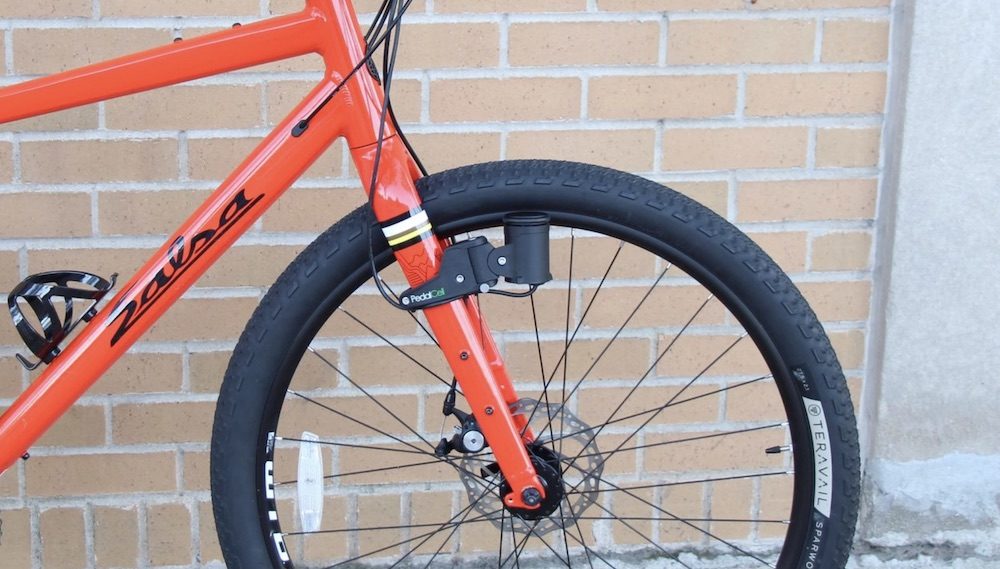
One of the most common devices that people charge on bike trips is a smartphone, but here’s the deal: it’s hard to predict charge times on a smartphone because the charging software chooses the charging rate, and there is a lot of variation between software.
The battery percentage is one factor that affects the charge rate of a smartphone – most will allow quick charging when a battery is empty, but will reduce the charge rate as you get closer to 100%.
Another factor is whether the screen is on or off. When the screen is on, a smartphone will usually accept more power than when your phone is on standby.
The apps that you’re using on your smartphone can also affect the charging rate.
And lastly, the dynamo USB charger that you’re using should also support the appropriate USB charging protocols for your smartphone. There are dozens of protocols that have been created by governing bodies and private companies to safely draw the maximum amount of power. If your charger is not using the suitable charging protocol for your smartphone, it may not achieve its full charging rate.
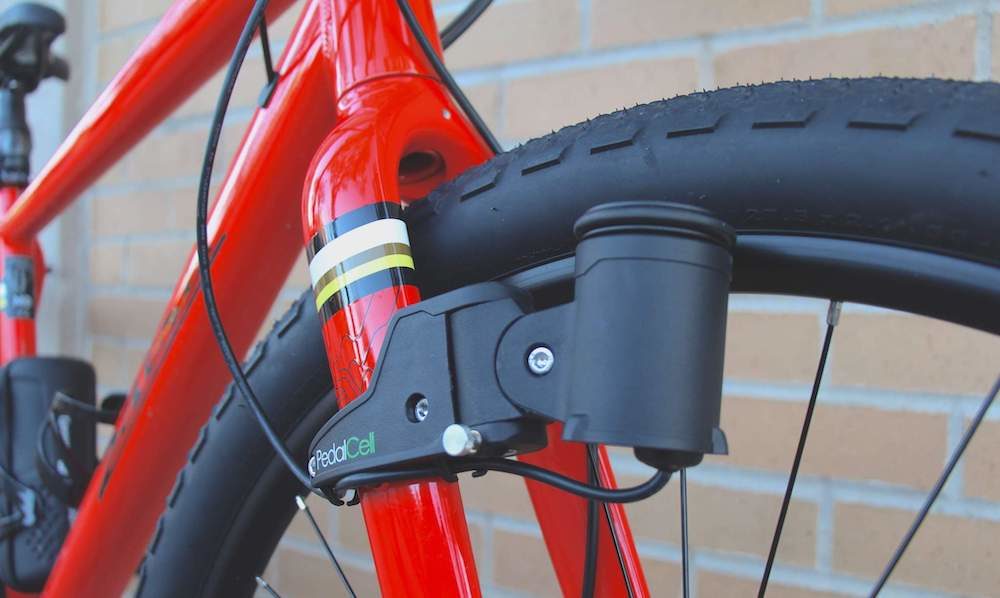
In some cases, smartphones do not charge well from a dynamo because the charging software thinks it is receiving power from a faulty wall charger, resulting in a significant throttling of the charge rate.
One reader has informed me that their Motorola smartphone charges at just 0.3A (1.5-watts) no matter the cycling speed, even though their B&M USB Werk charger should be putting out 0.7A (3.5-watts).
The work-around for this software limitation is to simply charge into a power bank first, before sending the power to your smartphone. Unfortunately, this reader will now have the abovementioned battery storage losses, but they will also get twice as much charge going into their smartphone!
Smartphone Charging With Varying Speeds
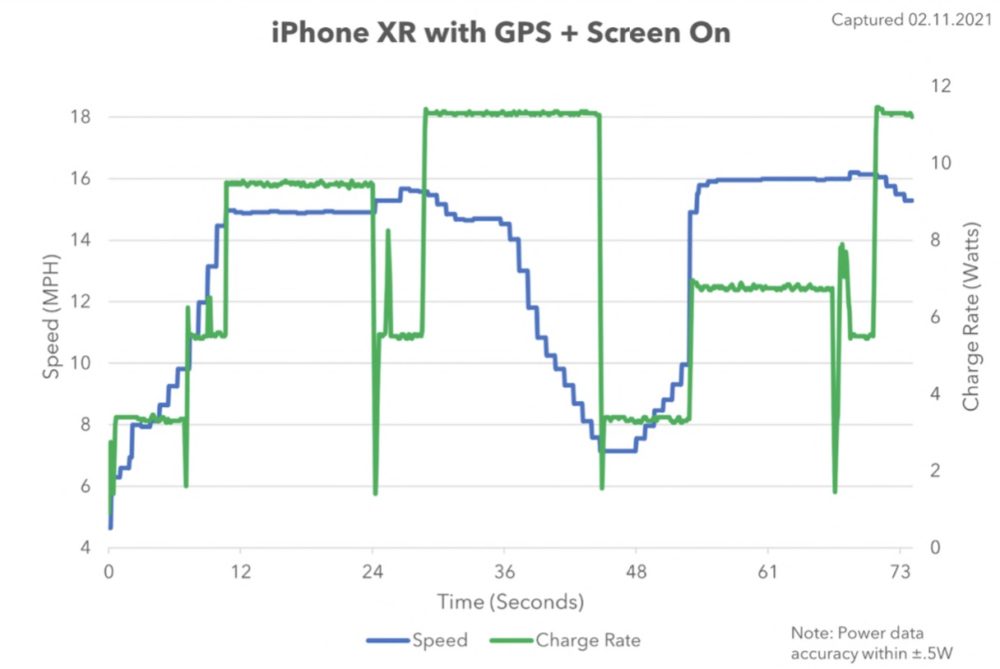
Ok, onto the smartphone charging data.
PedalCell conducted a lab test with three different smartphones to see how well their charger would negotiate with the smartphone software to optimise charge speeds. They tested the charging rates of these smartphones with the screen both on and off – I’m using the screen-on data for this resource.
The batteries were all at 40-50% charge – keep in mind that a smartphone tends to charge quickly here, so you will not get the same test results at 80% charge.
To get a sense of an iPhone XR’s charging speed using the PedalCell on hilly terrain, we can extrapolate the data from the graph (30-second descent followed by a 15-second climb x 80).
I’ve calculated that the charging rate is 1666mAh per hour (57% of the battery capacity) on this specific riding course.
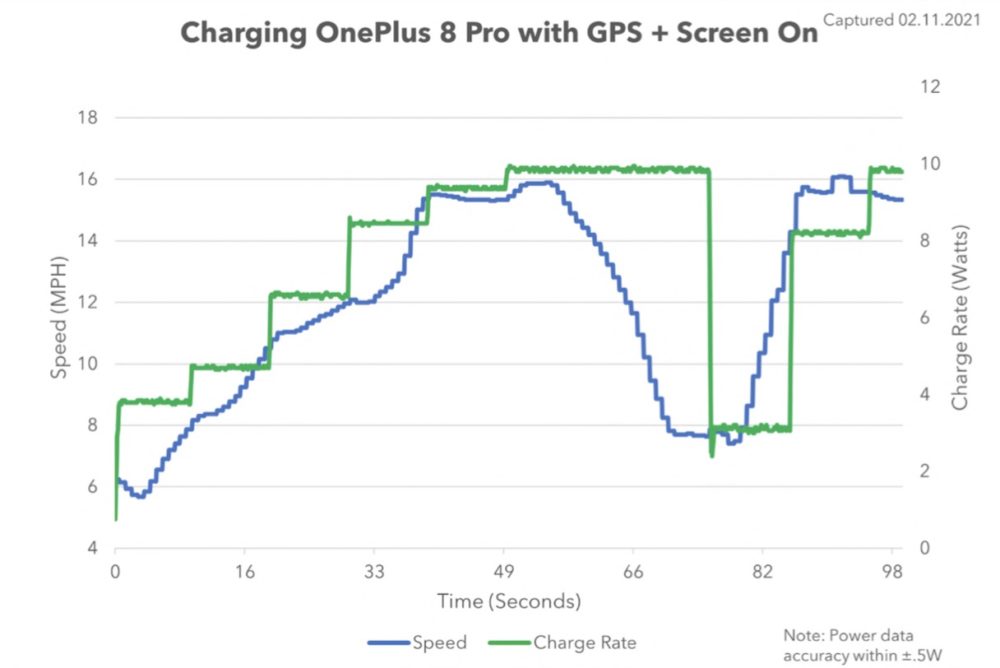
The PedalCell has very little negotiation time when charging the One Plus 8 Pro, showing this smartphone to charge in a similar manner to the 10400mAh battery.
So, does that mean it will be getting more charge when compared to the iPhone XR?
When we run the numbers here, the One Plus is getting around 1578mAh per hour into its battery, which is about 35% of its battery capacity. While the negotiation times are quick, the peak charge rate is a little lower than the iPhone, which means that it’s not quite picking up the same amount of charge at higher speeds.
Riding course: 50-second descent followed by a 20-second climb x 51
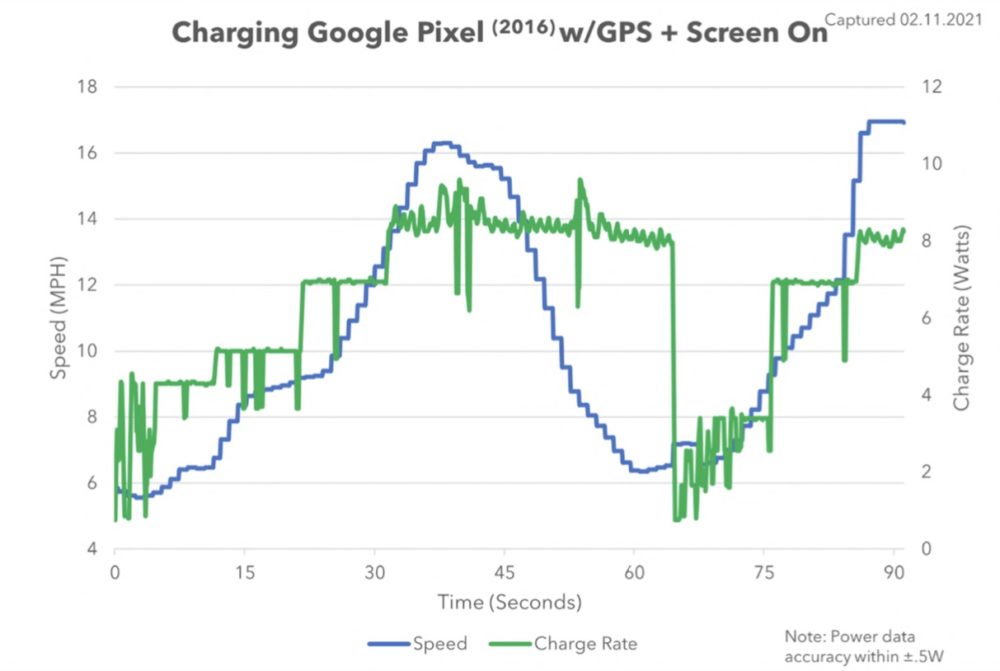
The Google Pixel (2016) had the lowest charge rate of the smartphones tested.
Interestingly, the Pixel’s software chose to fluctuate the current quite a bit compared to the other phones. PedalCell has suggested it could be because the battery was 4-5 years old, but when we look at the charging rate of the Pixel 2 XL from a wall charger, the phone’s charging rate likely fluctuated out of the box.
Despite a lower peak charging rate of around 8.5-watts, the Google Pixel was still able to charge at 1362mAh per hour, which is 49% of the battery capacity.
Riding course: 38-second descent followed by a 22-second climb x 60
Summary
This topic is a bit of a minefield, so if you’ve read the whole thing – congratulations! 👏🏼
At constant speeds, it’s relatively easy to predict how quickly a dynamo USB charger will fill a regular battery. We can simply look at the FahrradZukunft power output graphs to calculate how much charge per hour is possible. The graphs also indicate that some dynamo USB chargers offer substantially more power than others at different speeds.
Dynamo hubs also seem to offer a surprisingly large difference in charging performance. We can see that the Shimano UR700 has 20-50% more power available than other hubs at any given speed, although, the Skjegg data suggest that this hub has a high amount of drag for the power it offers.
Calculating charge times gets much more complicated when you’re riding in hilly terrain, as some USB chargers are more effective at varying speeds than others. As a general rule, however, the most powerful chargers will extract the most charge from your dynamo.
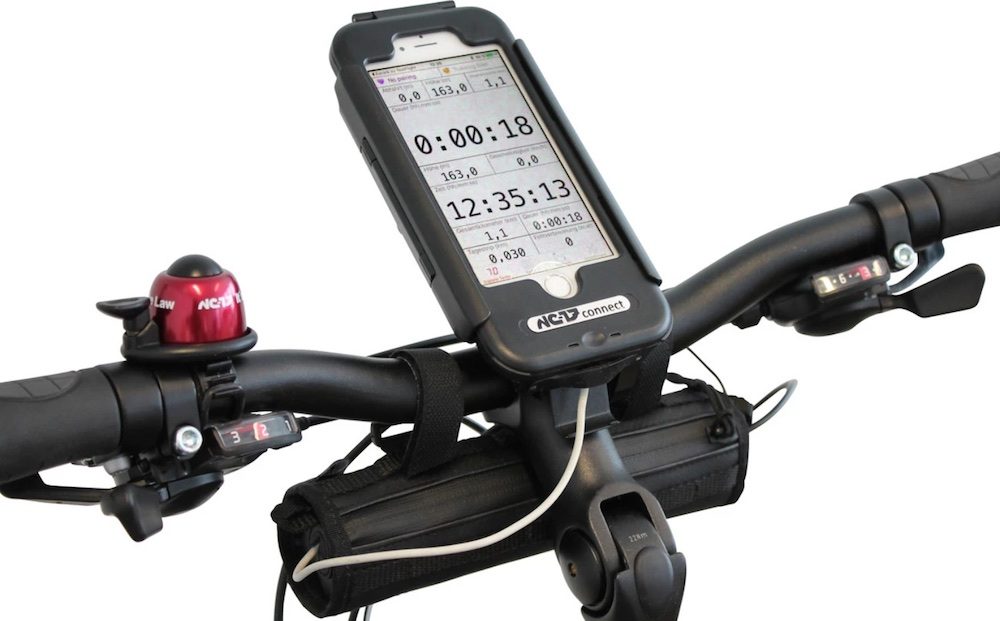
And finally, charging smartphones.
I wish I could give you a charge time on smartphones, but there are just too many factors to account for.
As we’ve seen with the three smartphones in the PedalCell test, the charging software plays a large role in determining the charging rate. The battery percentage is another factor, where lower percentages usually have the highest charging rates. Whether your screen is on or off, and what app you’re using will affect the charge rate too.
Thanks to PedalCell for collecting the data on charging batteries and smartphones at different speeds so that we can better understand dynamo charging! You can check out how the PedalCell rim dynamo produces more power than a hub dynamo, and at a higher efficiency HERE.
Learn About Dynamo USB Chargers HERE, Dynamo Hubs HERE, Dynamo Wiring Systems HERE, Pass-Through Batteries HERE and Dynamo Lights HERE


